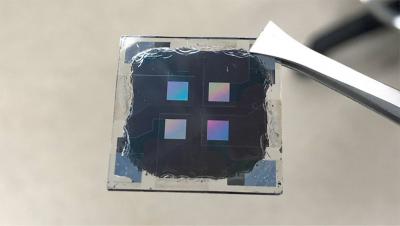Researchers from the National Renewable Energy Laboratory (NREL) have found that restructuring the way perovskite solar cells are designed can boost their efficiency and increase their deployment in buildings. Their newly proposed architecture for the cells increases the area exposed to the sun by putting the metal contact layers side-by-side on the back of the cell.
 Photo by Kevin Prince/NREL
Photo by Kevin Prince/NREL
'Taking the materials on top away means you are going to have a higher theoretical efficiency because your perovskite is absorbing more of the sun,' said Lance Wheeler, a NREL scientist .
The researchers, in their recent research related to building-integrated PV, have shown that a building's energy consumption could indeed be reduced. Buildings are the largest sector of the U.S. energy economy. They use 74% of the nation's electricity and account for 39% of total energy use and 35% of carbon emissions.
The paper was co-authored by Kevin Prince, Sean Dunfield, Glenn Teeter, Mirzo Mirzokarimov, Emily Warren, David Moore, Joseph Berry, and Colin Wolden, all from NREL; and Marco Nardone from Bowling Green State University.
'This strategy of putting both contacts on the back is one that's pretty well established in the PV world, but it is new to perovskites,' Wheeler said.
Using the different cell architecture, the scientists were able to create a solar cell with an efficiency of about 10%. However, the architecture has a higher theoretical efficiency than the cells holding the current record for performance. Further refinements could enable the creation of a cell with an efficiency of 27%-28%, Wheeler said.